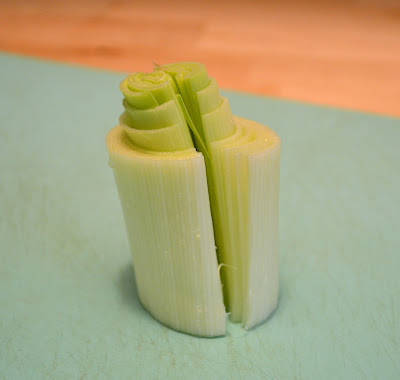Saturday, March 16, 2013
the Perfect Brownie
I say this is the perfect brownie, because I made it six times before I arrived at the perfect amount of sugar. Being a francophile, I always regarded brownies as plebeian food, but now I realize that these things have a different kind of appeal from fondant au chocolat.
Why did I bake brownies six times? I am no fan of sugary foods, and kept on cutting down on sugar. When I got it down to a nice bitter flavor, I noticed one thing: the brownie was not only dense, but did not have that slightly flaky hard outer layer that shatters at the slightest touch of your teeth.
Do you see that crustiness? That's what I wanted, but could not achieve, with bittersweet brownies. In the end I had to make these six times to figure out the threshold of crispy crust/no crust. It was worth the effort, and I present you the perfect brownie.
This is all you need:
3 ounces unsweetened Callebaut chocolate (90 grams)
7 tablespoons of unsalted butter (that's 1 stick of butter minus 1 tablespoon) (105 grams)
1/2 cup plus 1/3 cup plus 2 teaspoons white granulated sugar (or 14 tablespoons) (190 grams)
1 teaspoon vanilla essence
2/3 cup flour (95 grams)
2 large eggs
sprinkle of flaky salt (optional)
I'm sorry about the weird sugar measurements. But that's the exact amount, not a tablespoon more or less.
Look on the bright side: this is a one-bowl brownie.
Bake in the middle of the oven at 350 F for 20 to 25 minutes, or until a toothpick does not come out with gooey stuff on it.
Why did I bake brownies six times? I am no fan of sugary foods, and kept on cutting down on sugar. When I got it down to a nice bitter flavor, I noticed one thing: the brownie was not only dense, but did not have that slightly flaky hard outer layer that shatters at the slightest touch of your teeth.
Do you see that crustiness? That's what I wanted, but could not achieve, with bittersweet brownies. In the end I had to make these six times to figure out the threshold of crispy crust/no crust. It was worth the effort, and I present you the perfect brownie.
This is all you need:
3 ounces unsweetened Callebaut chocolate (90 grams)
7 tablespoons of unsalted butter (that's 1 stick of butter minus 1 tablespoon) (105 grams)
1/2 cup plus 1/3 cup plus 2 teaspoons white granulated sugar (or 14 tablespoons) (190 grams)
1 teaspoon vanilla essence
2/3 cup flour (95 grams)
2 large eggs
sprinkle of flaky salt (optional)
I'm sorry about the weird sugar measurements. But that's the exact amount, not a tablespoon more or less.
Look on the bright side: this is a one-bowl brownie.
Heat up the oven to 350 F.
Roughly chop up the unsweetened chocolate and put in a microwave-safe bowl with the butter. Nuke it in 30-second bursts until more or less melted.
This is quite enough - if you stir it a bit it will finish melting.
Add the sugar and vanilla essence, stir thoroughly. When the batter is not too hot to touch, add the eggs, one by one, and stir very well.
Add the flour, and mix quickly. Do not over-mix. Just enough so that it's not floury.
Pour in a pan lined with parchment paper and sprinkle with flaky sea salt if you wish. I recommend it!
This would be good for a 8 by 8 inch square pan, but I happened to use a 14 by 5 inch pan and it was alright - possibly a bit thinner, but no big deal.
Let it cool to room temperature before cutting. Surprisingly, I prefer these at room temperature, not hot out of the oven or even warm. Of course it's a personal thing, but I like my fondant au chocolat hot, and my brownies cool.
Enjoy!






















































